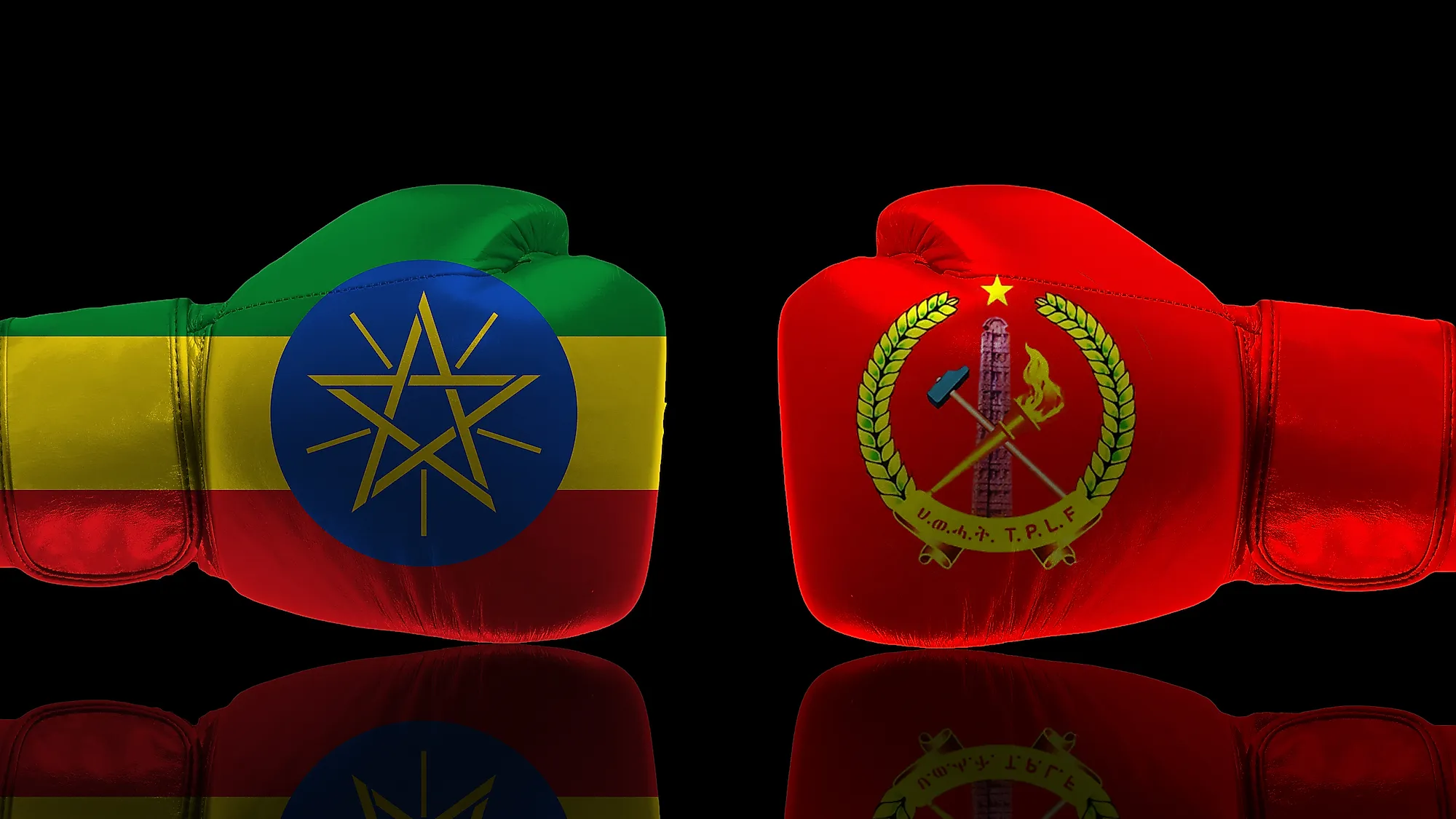
The Conflict In Ethiopia
Ethiopia is no stranger to conflict, or to humanitarian disasters. In the last fifty years, the country has gone through violent, revolutionary change, beginning with a military coup in 1974, followed by a long civil war, which was accompanied by a disastrous famine. Peace finally returned to the country in the early 1990s. A new system of government was put in place, which was designed to accommodate Ethiopia’s myriad of ethnic groups, giving them autonomy in the form of their own regions, each with an autonomous administration. In the last ten years, the country’s economy has grown exponentially. Thus, it seemed that Ethiopia was on the right track towards prosperity. But in November of 2020, violent conflict took root in the country once again.
About Ethiopia
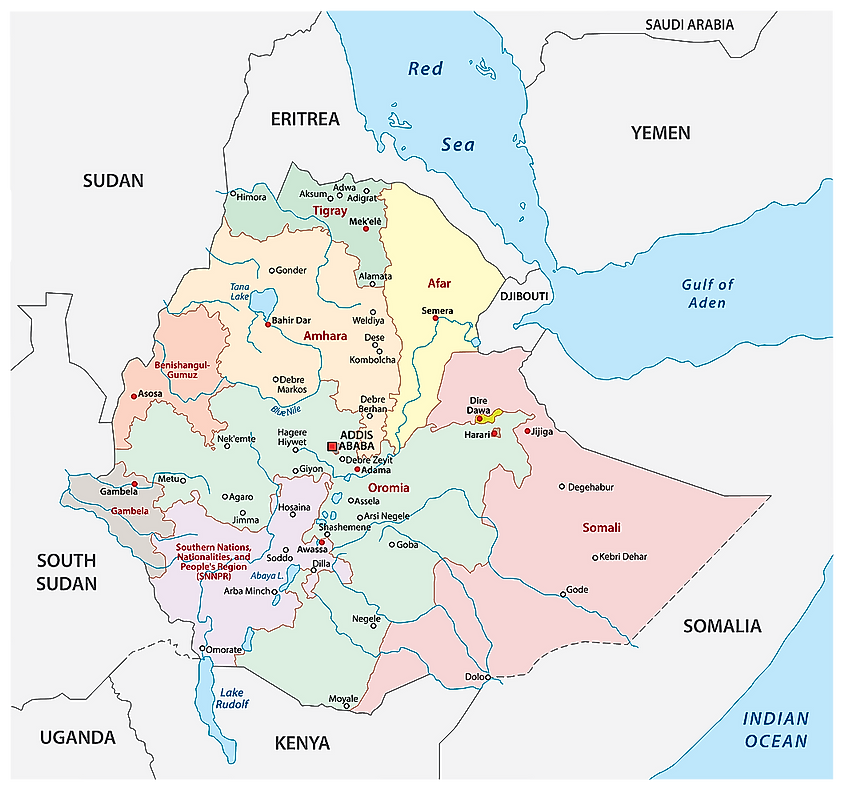
Ethiopia is a country in East Africa, or more specifically in what is known as the Horn of Africa. It is bordered to the east by Somalia, to the north by Eritrea and Djibouti, to the south by Kenya, and to the west by Sudan and South Sudan. The country has a long history dating back to the 2nd century CE, when the Kingdom of Axum, which was based in what is now Ethiopia, was a regional trading power. In the 19th century, when most of Africa was under the control of European colonial powers, Ethiopia maintained its independence. The country was invaded and conquered by Italy in 1935, though occupied only until 1941, when British forces liberated the country. In 1974, a military coup overthrew the Ethiopian monarchy. Three years later, a Marxist regime took over the country.
In 1991, following a long civil war in which millions died of famine, the Marxist military regime was overthrown by the forces of the Ethiopian People’s Revolutionary Democratic Front (EPRDF), which was composed of several parties representing the country’s different ethnic groups. Two years later, Eritrea, which was situated on the northern Red Sea coast of Ethiopia, was allowed to secede and become independent, making Ethiopia a landlocked country. Ethiopia has since been governed as a federation of several ethnically-based states, including the northern state of Tigray, the site of the current conflict.
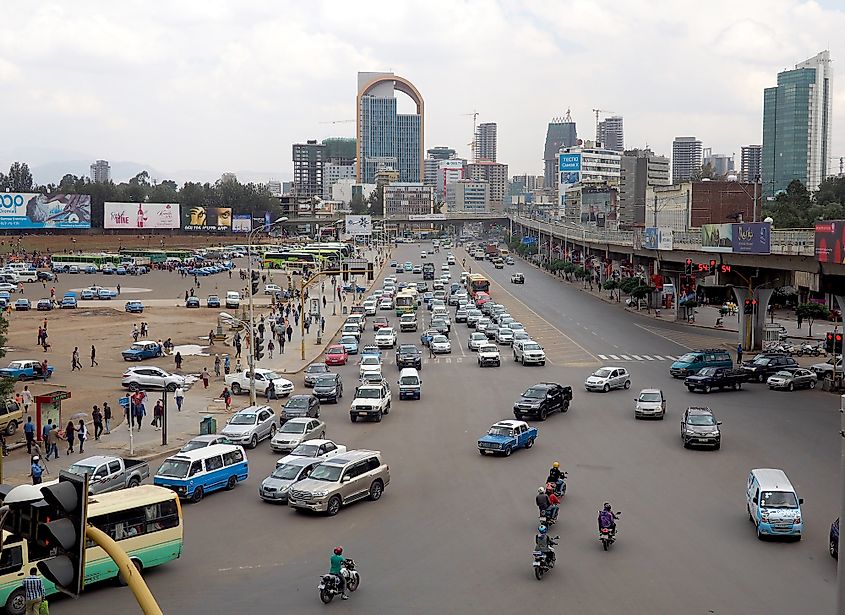
Ethiopia is the second most populated country in Africa, boasting a population of more than 118 million. These people belong to a myriad of ethnic groups. The largest ethnic groups in Ethiopia are the Oromo and Amhara. Other ethnic groups with sizeable populations are the Somalis, Tigray, Sidama, Gurage, Welayta, Afar, Hadiya, and Gamo. Ethiopia is subdivided into nine regions. As previously mentioned, these regions were drawn up based on the territory inhabited by the various ethnic groups. Tigray, the region in which the current conflict is taking place, is in the northern part of the country, and is bordered by Amhara to the south, Afar to the east, and the independent countries of Eritrea to the north and Sudan to the west. The area of Ethiopia’s capital, Addis Ababa, is also one of the country’s regions. Addis Ababa is the country’s largest city, with a population of more than 2.75 million.
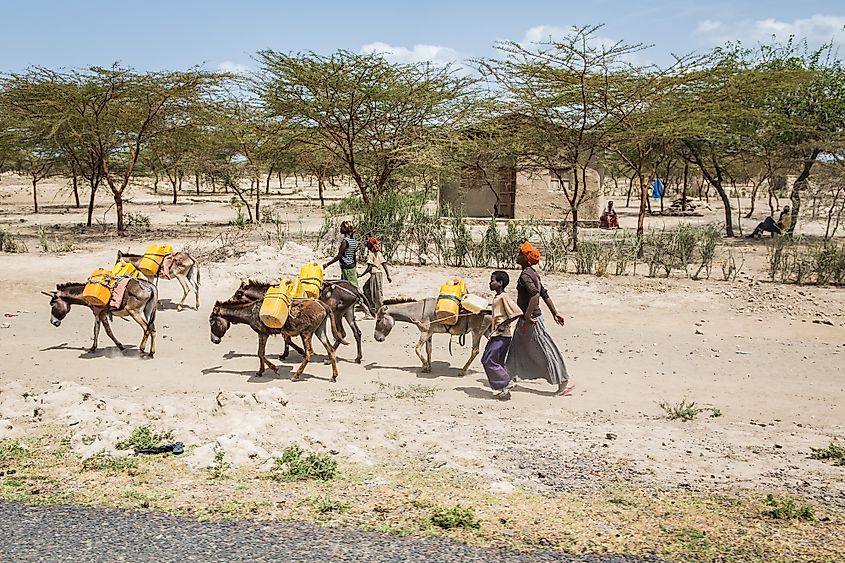
Like most countries in Africa, Ethiopia is poor. The country has been stricken by famine on numerous occasions, and has a low per capita GDP (gross domestic product) of $850. Nevertheless, Ethiopia is the fastest growing economy in the region. Between 2010 and 2020, the country averaged an economic growth rate of 9.4%. Ethiopia’s economy is still heavily dependent on agriculture, which makes up 46% of the country’s total GDP, and employs 85% of its workforce.
How The Tigray Conflict Began
In 2018, following a period of unrest and anti-government protests, the Ethiopian Prime Minister, Hailemariam Desalegn, resigned from his post. He was replaced by Abiy Ahmed, an ethnic Oromo, who instituted a series of new policies, including political reforms, and attempts to improve the country’s diplomatic ties. His government freed many political prisoners from the country’s jails, and lifted the country’s state of emergency. Prime Minister’s Ahmed’s new policies created a sense of optimism in the country, but it did not last.
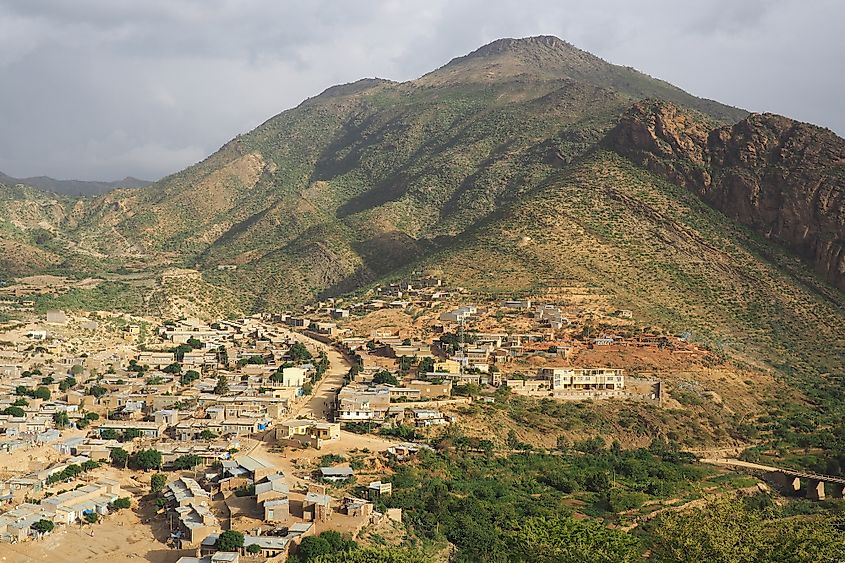
On November 4, 2020, an attack on federal army camps in Tigray took place. Prime Minister Ahmed blamed this attack on the Tigray People’s Liberation Front (TPLF). The TPLF was one of the factions in the ruling EPRDF, which took power in Ethiopia in 1991, following the overthrow of the previous military regime. For a time, the TPLF was the dominant faction in the EPRDF. But this dominance was threatened when Prime Minister Ahmed took power. He removed Tigrayan government leaders from their posts, accusing them of corruption and repression. He also set up a new political party, the Prosperity Party, breaking ranks with the EPRDF. The Tigrayans feared that Ahmed intended to recentralize power in the country, and dismantle the federal system.
In defiance of the central government, the TPLF decided to hold a regional election in Tigray in September of 2020. In response, the central government declared the election illegal, stopped funding the region of Tigray, and cut ties with the regional Tigrayan government. When the attack on November 4th took place, Prime Minister Ahmed responded by sending troops into Tigray to conduct a campaign against the TPLF. This campaign included air raids and a ground invasion. In addition, federal Ethiopian troops were said to be getting assistance from neighboring Eritrea. On November 28th, after three weeks of fighting, Prime Minister Ahmed declared an end to operations in Tigray after federal troops captured the Tigrayan capital, Mekelle. Nevertheless, fighting continued afterwards. Moreover, a growing humanitarian crisis began to emerge.
The Conflict Continues
As federal Ethiopian troops advanced into Tigray, tens of thousands of refugees fled the region for neighboring Sudan. Within the first ten days of the conflict, hundreds of people had already been killed. Refugees interviewed by the media described mass atrocities, including the indiscriminate killing of civilians. They also accused the Ethiopian government of ethnic cleansing, saying that the government wanted to push Tigrayans out of their home region.
On March 23, 2021, Prime Minister Ahmed admitted that Eritrean troops were involved in the fighting in Tigray. Indeed, one month earlier, human rights group Amnesty International accused Eritrean troops of slaughtering hundreds of civilians in Tigray’s holy city of Axum. Two weeks prior to Ahmed’s admission about the involvement of Eritrean troops, US Secretary of State Antony Blinken used the term “ethnic cleansing” to describe the violence in the Tigray region.
On April 27th, the United Nations reported that hostilities were still occurring in Tigray. In fact, by late June, the war in Tigray took another turn, as rebel troops undertook an offensive to retake Mekelle. On June 29th, the TPLF claimed that they had retaken the city in its entirety. The group also claimed that they would take their fight to other regions of Ethiopia, and into Eritrea, if they felt it was necessary.
The Humanitarian Crisis In Tigray
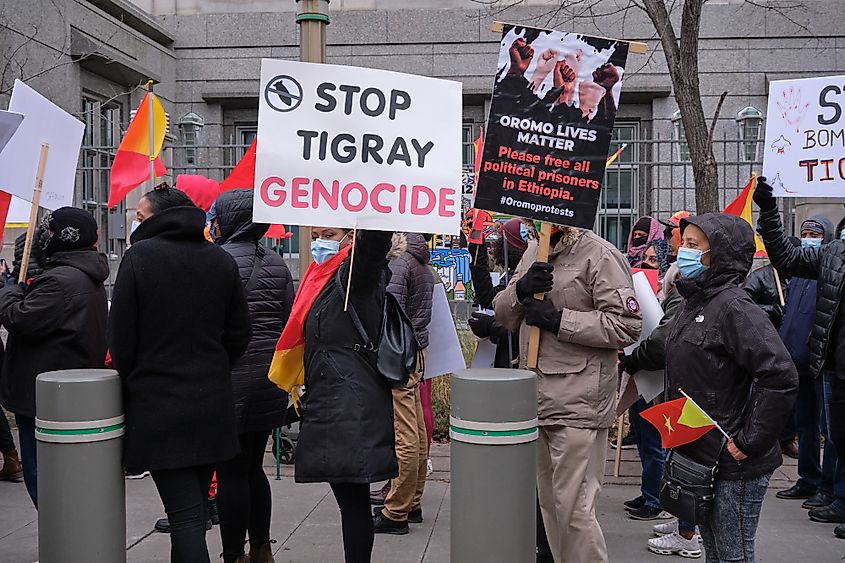
According to the UN’s Office for the Coordination of Humanitarian Affairs (OCHA), there are 5.2 million people in Tigray who are in desperate need of humanitarian assistance. OCHA also reports that as of November 7, 2020, there were 63,110 refugees who had fled to Sudan because of the Tigray conflict. For the period from May through to December, 2021, the UN is seeking $854 million in funding for humanitarian relief efforts. So far, however, only $419 million has materialized. On June 10th, the UN and other international aid groups reported that more than 350,000 people in the region faced famine conditions, and that millions more were at risk.
In fact, based on the latest figures, it is estimated that 300,000 young children could soon die of starvation. Typically, two thirds of those who die in a famine are young children. Moreover, the famine is not confined to Tigray. Large parts of the neighboring regions of Afar and Amhara are also experiencing famine conditions. In all, more than 3 million people in these neighboring regions are affected. Making the humanitarian situation in the Tigray conflict even worse is the destruction of health and agricultural infrastructure. Both the Ethiopian and Eritrean armies have been accused of burning crops, destroying health facilities, and preventing farmers from ploughing their fields.
Obstacles To Providing Humanitarian Aid
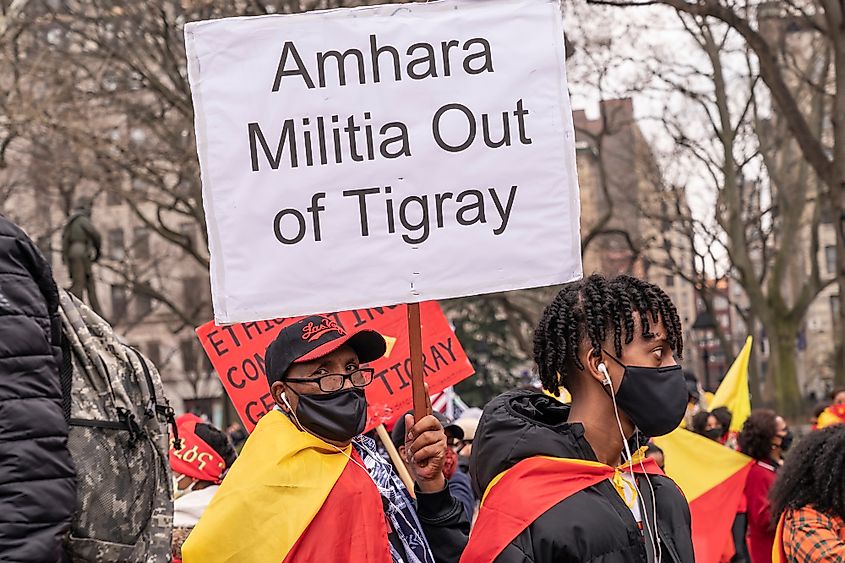
Getting humanitarian aid to those most in need in Tigray and neighboring areas has not been easy. In fact, sometimes, it is impossible. For example, one third of Tigray’s 6 million people live in areas that are occupied by the Eritrean army, which does not cooperate with humanitarian agencies. Another 1.5 million people live in rural areas controlled by the Tigrayan rebels, which are now inaccessible to humanitarian workers. In many cases, it has been reported that the Ethiopian army blocks aid workers from reaching rural areas under rebel control, claiming that they are helping the rebels. There have also been reports of food aid being stolen. In addition, simply trying to provide humanitarian aid to those in need in Tigray can be deadly, as humanitarian workers in the region have been killed. For instance, on June 25, 2021, the charity known as Doctors Without Borders claimed that three of its employees were “brutally murdered.” As a result of all the difficulties associated with getting humanitarian aid to the most needy, it is estimated by independent sources that just 13% of the aforementioned 5.2 million people in need of humanitarian assistance are actually getting it.











